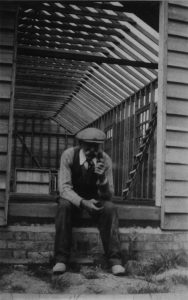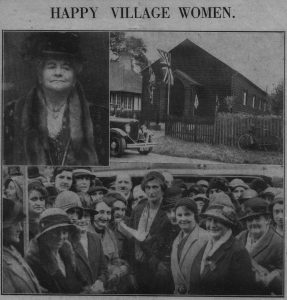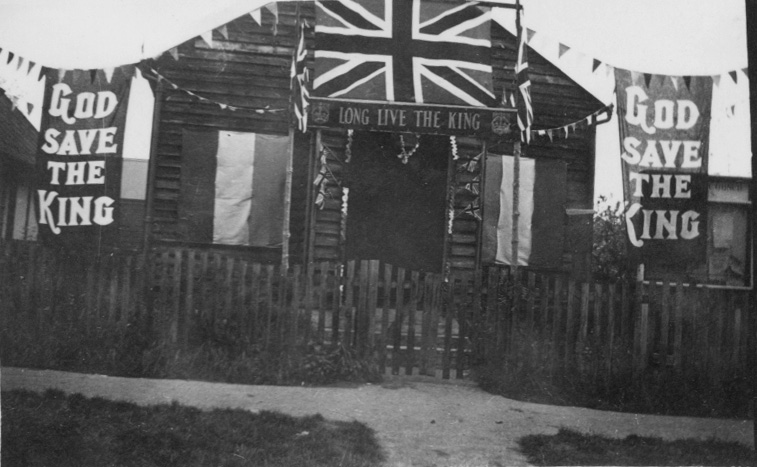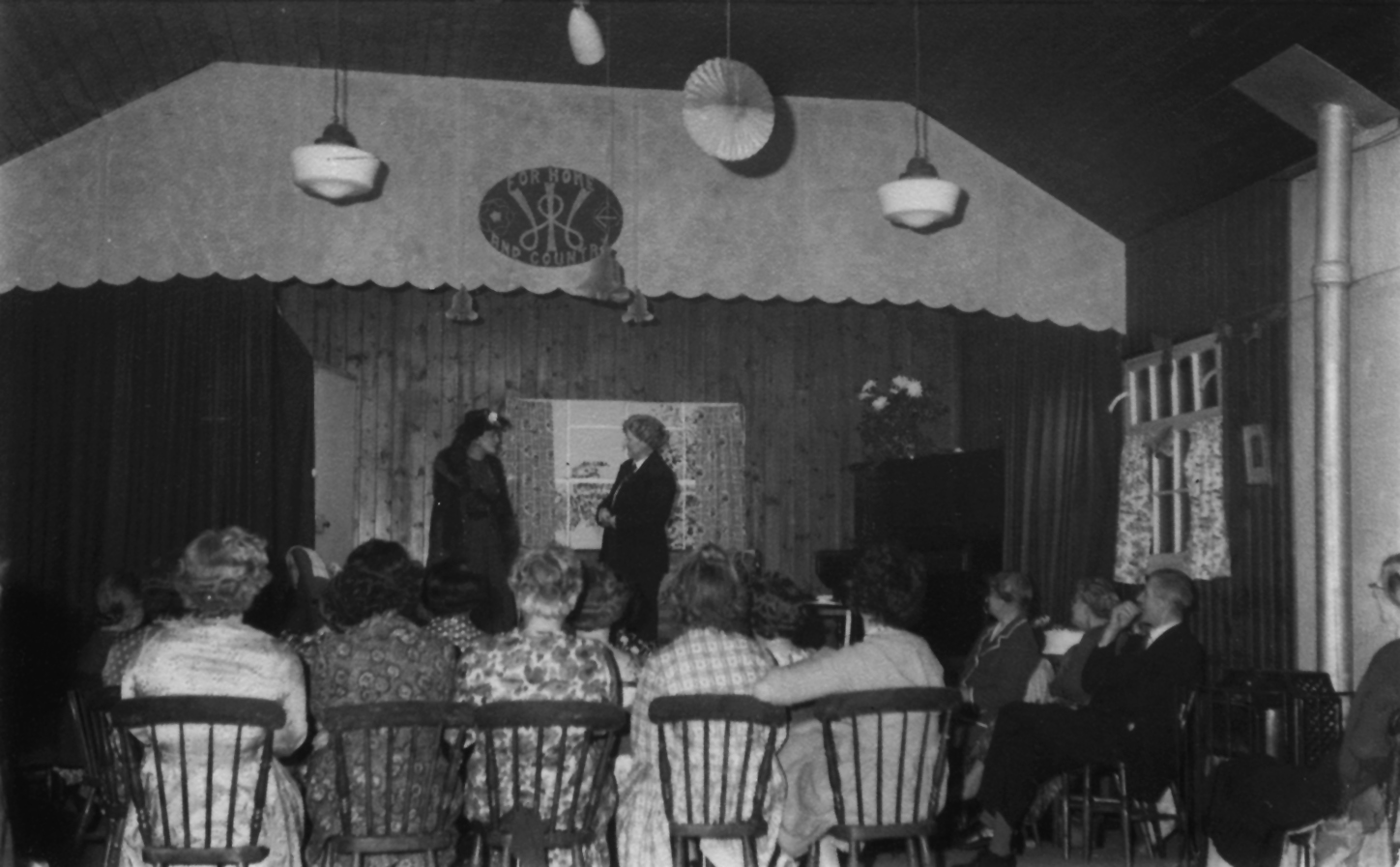 Mr Edwin Peacock was a man of diverse trades – not only the publican of one of the local Coton pubs, he was also a carpenter and undertaker. His was the hand which built the first village hall in Coton in 1931 at a cost of just under £400 – a total which included the purchase of the land and some furniture.
Mr Edwin Peacock was a man of diverse trades – not only the publican of one of the local Coton pubs, he was also a carpenter and undertaker. His was the hand which built the first village hall in Coton in 1931 at a cost of just under £400 – a total which included the purchase of the land and some furniture.
Over the years Hall improvements took place. A much needed kitchen and cloakroom was added in 1936, coke heating stoves were replaced with gas heaters, a new corrugated tin roof was installed, together with a new hall floor, replacement electrical fittings and wiring. A new toilet block in 1968 replaced the old thunderbox at the rear of the building!
 Most of the money for all this work was raised by local fundraising and all credit must be given to the ladies of the Coton W.I. and their supporting men folk for maintaining the much loved W.I. Hall for 79 years.
Most of the money for all this work was raised by local fundraising and all credit must be given to the ladies of the Coton W.I. and their supporting men folk for maintaining the much loved W.I. Hall for 79 years.
Over the years the hall was used for countless meetings, anniversaries, civic celebrations, jumble sales, flower shows and was home to the famous Coton Follies shows.
By 2002, a building which had served the community well, was in need of repair and no longer had the facilities needed of a modern village hall. It was clear that something had to be done! A team of 14 enthusiastic volunteers rose to the challenge and set up Coton Village Hall Fund with the view of funding and replacing the old hall with a modern building. A daunting task for a small village!
With an initial donation of £2759 from the W.I., fundraising events commenced. You name it, we did it: Car Boots, Jumble Sales, 200 Club Lottery, Monthly Lunches, Bingo Sessions, Concerts, Produce Stalls, Hog Roasts, Dances, Gourmet Dinners, Village Fetes, Quiz Evenings, Marathon Sponsorship and even sales of garments made with the wool from local pet alpacas Spike and Orion. Together with donations, gift aid and bank interest fundraising was maintained at an average rate of over £1000 every month to a total of £106,016.
THE HALL PROJECT 2010 – 2012
We commissioned an extensive structural survey of the existing hall which showed that the frame and foundations were in very good condition. Encouraged by the survey results we decided to proceed with a multi phase redevelopment of the existing hall and crucially, the scheme could use smaller grants that were available.
Ownership of the hall and site was transferred which is now held in trust for the community by Coton Village Hall Ltd. Work began in June 2010, first a new kitchen and hall store, then new toilets and entrance hall. This was followed by a new air conditioning system and oak floor to the main hall. The courtyard base followed, lots of insulation added to the building frame, new external cladding and render and new zinc roof. Finally the main hall was extended and the courtyard bonded stone added. We were able to keep the hall in use for most of the time the building work was in progress.
A Grand Opening of the refurbished hall by Cllr. Tony Orgee Chairman of South Cambs. District Council took place in April 2012.
THE FINAL PHASE 2013 – 2016
In the final phase of development we added the meeting room and an additional ladies toilet to the facilities of the Village Hall. The extension provides an additional meeting room of some 320 square feet. The existing main meeting room (which has a floor area of approximately 975 square feet) can be booked by itself or, for larger events, both rooms can now be hired. The Trustees gratefully acknowledge the grant from WREN’s FCC Community Action Fund of £40,000 and the £20,000 grant we have received from the Amey Community Fund, which have both contributed towards the cost of this project.
In addition part of a £20,000 donation made to the Hall by the estate of a late resident, Daniel House, has been used to complete the £75,000 total funding required for the extension. Coton Parish Council has also been very supportive of this initiative. We thank each of these supporters for their contributions as, without their help, this extension could not have been built


